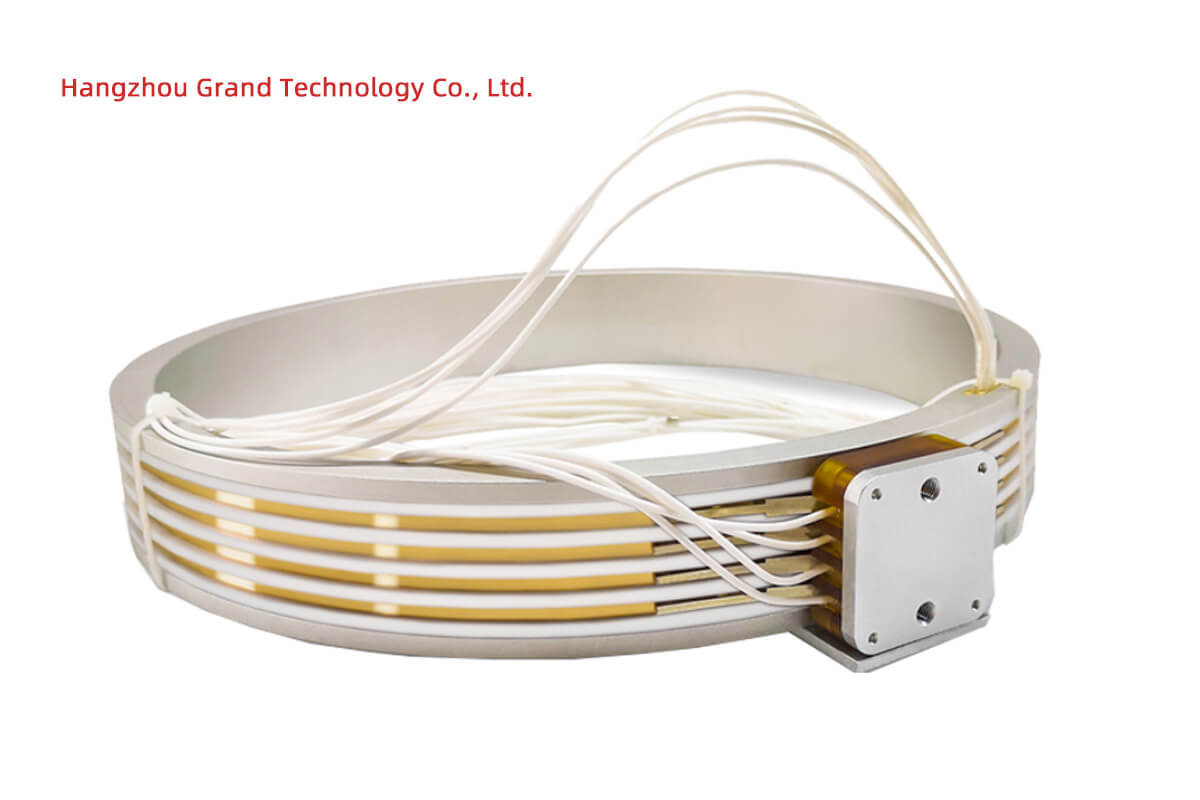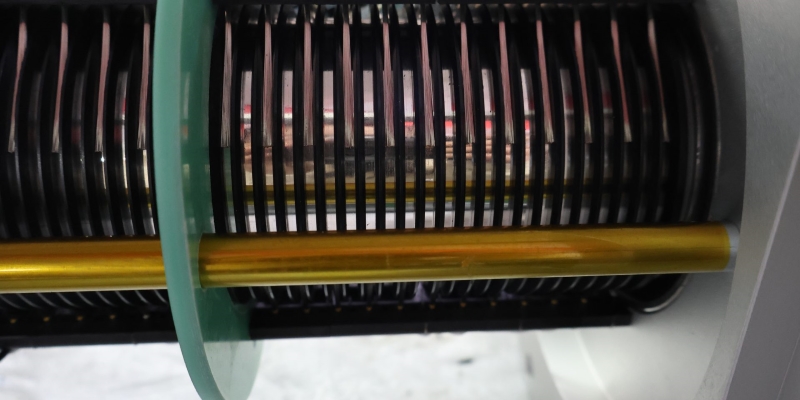CT scanners are an important tool in the medical field, and they rely on slip rings to ensure that the scanner can move around the patient without any interruption. Slip rings are an essential component of CT scanners, and they provide a number of benefits that make them an invaluable part of the medical imaging process.
What is a Slip Ring?
A slip ring is a device that allows electrical signals to be transferred between two rotating objects. It is a type of electrical connector that is used in a variety of applications, including CT scanners. Slip rings are used in CT scanners to allow the scanner to rotate around the patient without any interruption in the electrical signal.

Types of Slip Rings Suitable for CT Scanners
For CT scanners, slip rings are essential for ensuring continuous data transmission and power delivery as the gantry rotates. Below are the most suitable types of slip rings for CT scanners, along with their key features and advantages.
Electrical Slip Rings
- Function: Provide continuous electrical power from stationary parts to rotating components.
- Application in CT Scanners: Power the rotating X-ray tube and other components.
- Features:
- Low electrical resistance to minimize signal noise.
- Durable design to handle high-speed rotation with minimal maintenance.
Fiber-Optic Slip Rings (FORJ – Fiber-Optic Rotary Joints)
- Function: Enable high-speed, interference-free data transmission.
- Application in CT Scanners: Transfer large volumes of image data from rotating detectors to the stationary processing system.
- Features:
- High bandwidth to support fast data transmission.
- Immunity to electromagnetic interference (EMI) for accurate imaging.
- Ideal for transmitting critical imaging data at high speed.
Hybrid Slip Rings (Electrical + Fiber-Optic)
- Function: Combine electrical and fiber-optic channels within a single slip ring.
- Application in CT Scanners: Provide both electrical power and data transmission simultaneously.
- Features:
- Compact design suited to the space constraints of the CT gantry.
- High reliability by integrating both power and signal functions.
- Seamless operation ensures uninterrupted power and data flow.
Wireless Slip Rings (Inductive Coupling)
- Function: Transfer power and data wirelessly, eliminating mechanical contact.
- Application in CT Scanners: Used to avoid brush wear and ensure maintenance-free operation.
- Features:
- Reduced friction and wear due to non-contact transmission.
- Maintenance-free design enhances equipment longevity.
- Capable of transmitting both power and high-speed data.
Capacitive Slip Rings
- Function: Use capacitive coupling to transfer high-frequency data without physical contact.
- Application in CT Scanners: Suitable for transmitting sensitive imaging data with minimal noise.
- Features:
- Contactless data transfer ensures reduced mechanical wear.
- High data transfer rates with minimal signal degradation.
- Ideal for transmitting real-time imaging data with high precision.
In CT scanners, fiber-optic slip rings and hybrid slip rings are particularly suitable because of their ability to handle large amounts of data with minimal interference. Wireless and capacitive slip rings are also gaining popularity due to their maintenance-free operation and ability to reduce mechanical wear, making them ideal for medical environments that require reliability and precision. Each type offers specific advantages, ensuring that modern CT scanners perform smoothly and deliver high-quality diagnostic images.
Specific Functions of CT Scanner Slip Rings
In CT scanners, slip rings play a crucial role in enabling continuous rotation of the gantry while transmitting both power and data efficiently. Below are the key functions they perform, ensuring seamless operation and accurate imaging.
1. Transmission of Electrical Power
- Function: Provide continuous power from stationary components to the rotating parts of the CT scanner.
- Purpose: Powers critical rotating components like the X-ray tube, cooling systems, and detector arrays.
- Impact: Ensures the scanner’s gantry can rotate continuously without needing to reset or reposition, improving scanning speed and workflow.
2. Transmission of Imaging Data
- Function: Transmit large volumes of imaging data from the rotating detectors to the stationary data processing system.
- Purpose: Ensures that the detector arrays can send real-time data to the computer for reconstruction of cross-sectional images.
- Impact: Reduces scan time and ensures high-quality imaging with precise, detailed diagnostic results.
3. Elimination of Cable Twisting and Tangling
- Function: Allow continuous 360-degree rotation of the gantry without the need for external cables or connectors.
- Purpose: Prevents cables from tangling, wearing, or breaking due to continuous movement.
- Impact: Increases the reliability and lifespan of the scanner, reducing downtime and maintenance costs.
4. Reduction of Electrical Noise and Interference
- Function: Maintain stable and interference-free transmission of signals and power.
- Purpose: Critical for high-precision medical imaging, where noise can distort data and affect diagnostic accuracy.
- Impact: Ensures smooth and reliable signal transmission, resulting in clearer, artifact-free images.
5. Support for High-Speed Data Transmission
- Function: Transfer large data streams at high speeds from the rotating components to the computer system.
- Purpose: Essential for multi-slice CT scanners that generate huge volumes of data in seconds.
- Impact: Improves scanning efficiency, allowing for faster scans and higher patient throughput.
6. Maintenance-Free Operation
- Function: Enable long-term, frictionless or low-maintenance rotation, especially with wireless or fiber-optic slip rings.
- Purpose: Reduces the need for regular repairs or component replacement due to wear and tear.
- Impact: Improves uptime and reliability, ensuring the scanner is always ready for use.
7. Enabling Multi-Energy Scanning
- Function: Provide stable power and signal transmission required for advanced scanning techniques like dual-energy CT.
- Purpose: Dual-energy systems switch between different energy levels to improve tissue differentiation.
- Impact: Facilitates complex imaging techniques, leading to more accurate diagnoses.
8. Optimizing Patient Safety and Comfort
- Function: Ensure the smooth and continuous operation of the gantry to perform fast scans.
- Purpose: Minimize the time patients need to remain still in the scanner, reducing discomfort and anxiety.
- Impact: Leads to better patient experiences and minimizes movement artifacts in the scan.
The slip rings in CT scanners are critical to both operational efficiency and image quality. Their primary functions include delivering power, transmitting data, preventing cable tangling, and reducing electrical noise. Additionally, modern advancements in slip ring technologies—such as fiber-optic, wireless, and hybrid systems—ensure that scanners operate reliably with minimal downtime, providing fast, precise, and high-quality imaging for improved patient care.
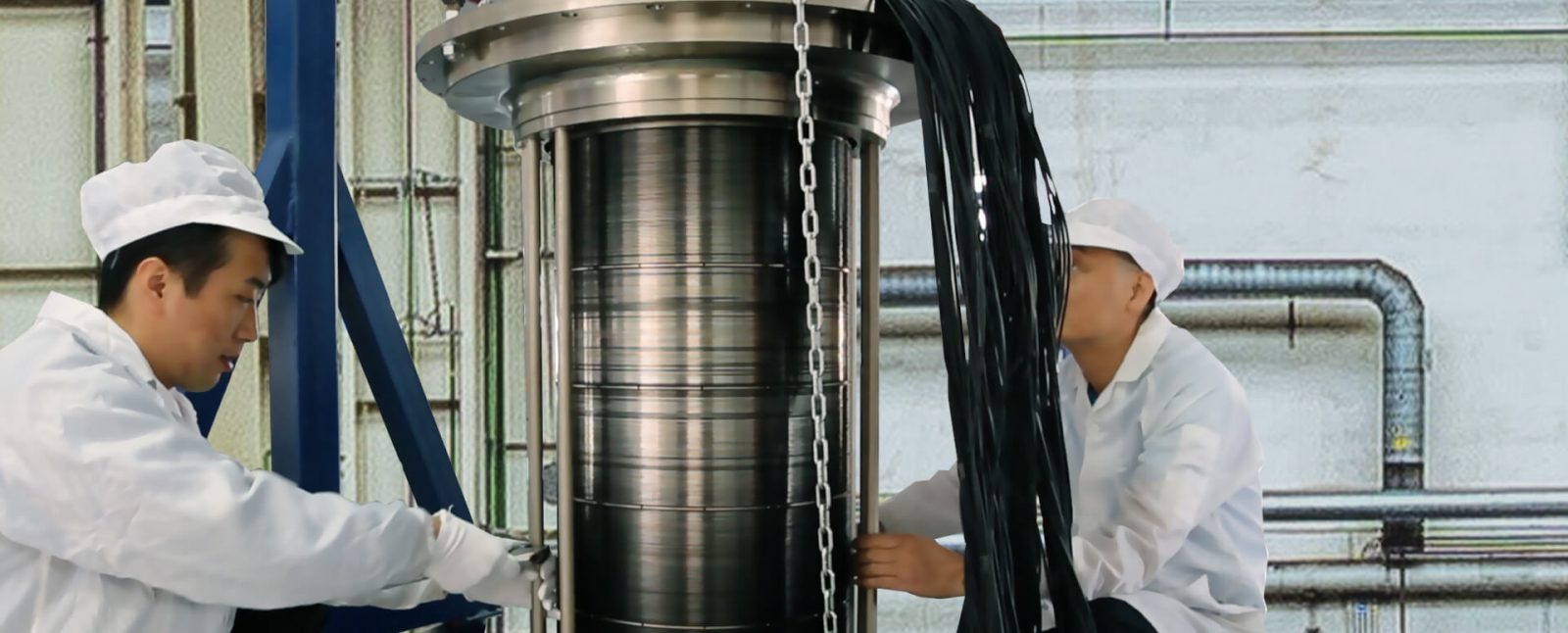
Application of Slip Ring Technology in CT Scans
The use of slip ring technology in CT (Computed Tomography) scanners is essential for enabling continuous rotation of the scanner’s gantry, allowing for faster and more efficient imaging. Below are the key applications of slip ring technology in CT scanners:
1. Enabling Continuous Gantry Rotation
- Application: The gantry of a CT scanner, which holds the X-ray source and detectors, rotates continuously around the patient to collect imaging data.
- Impact: Slip rings eliminate the need for resetting or rewinding the system between rotations, which was necessary in early CT systems. This increases scanning speed and patient throughput.
2. Power Transmission to Rotating Components
- Application: Slip rings deliver electrical power from the stationary frame to the rotating components, such as the X-ray tube, cooling system, and detector array.
- Impact: Continuous power supply ensures smooth operation of the rotating parts, reducing the risk of disruptions during scans and increasing the reliability of the equipment.
3. Data Transmission from Detectors
- Application: Large volumes of imaging data collected by the rotating detectors are transmitted via slip rings to the stationary computer system for real-time processing.
- Impact: This enables high-speed data transfer, which is crucial for multi-slice or helical CT scans, allowing precise and detailed image reconstruction.
4. Facilitating Helical (Spiral) CT Scanning
- Application: Slip rings make helical CT scans possible by allowing the gantry to rotate continuously while the patient moves slowly through the scanner.
- Impact: Helical scanning reduces the overall scan time and enables 3D reconstruction of body tissues, improving diagnostic accuracy.
5. Reducing Wear and Tear on Equipment
- Application: By eliminating the need for cables that would twist or tangle with continuous movement, slip rings reduce mechanical stress on components.
- Impact: This results in lower maintenance costs and improved equipment longevity, ensuring that the scanner is available for more patients with fewer repairs.
6. Enhancing Image Quality
- Application: Slip rings transmit signals and data without interruptions or interference, even during fast rotation.
- Impact: This ensures that images are captured accurately and without artifacts, which is critical for high-quality diagnostic imaging, especially in multi-detector CT (MDCT) systems.
7. Supporting Dual-Energy and Advanced Scanning Techniques
- Application: In dual-energy CT scanners, which switch between different X-ray energy levels, slip rings ensure uninterrupted power and data flow to accommodate the rapid changes required.
- Impact: Advanced imaging techniques improve tissue differentiation and enable better detection of diseases such as cancer and vascular abnormalities.
8. Improving Patient Experience
- Application: Slip ring technology speeds up scan times, allowing for shorter examinations, which helps reduce patient discomfort and the likelihood of movement artifacts.
- Impact: Faster scans contribute to improved patient care, especially for pediatric or claustrophobic patients, by minimizing the time spent inside the scanner.
9. Minimizing Downtime with Low-Maintenance Design
- Application: Many modern CT scanners use wireless or fiber-optic slip rings that require minimal maintenance, further enhancing operational reliability.
- Impact: Maintenance-free or low-maintenance systems maximize uptime, ensuring the scanner is always ready for use and improving patient scheduling.
10. Compatibility with Future Innovations
- Application: Slip ring technology supports the development of new imaging techniques and faster scanners by enabling high-speed, high-capacity data and power transfer.
- Impact: This ensures that CT scanners can keep up with advancements in medical imaging technology, meeting the increasing demand for precision diagnostics.
Slip ring technology plays a vital role in modern CT scanners by enabling continuous gantry rotation, fast data transmission, and uninterrupted power delivery. This technology supports advanced imaging techniques like helical and dual-energy scanning, enhances patient comfort by speeding up scans, and ensures minimal downtime with low-maintenance designs. As CT technology continues to evolve, slip rings will remain integral in meeting the growing demands for speed, accuracy, and reliability in diagnostic imaging.
CT Scanner Slip Rings Image Data Transfer
In CT scanners, slip rings enable smooth image data transfer between the rotating and stationary components, playing a crucial role in real-time data processing and delivering high-quality images. Here’s how slip rings function in the context of image data transfer:
How Image Data Transfer Works Through Slip Rings
- Rotating Detectors Capture Data
As the gantry rotates around the patient, detector arrays collect X-ray signals passing through the body. These signals are converted into digital data by electronics located in the rotating part of the gantry. - Slip Ring Data Transmission
Slip rings allow continuous data transmission from the rotating detectors to the stationary computer system. Depending on the slip ring type, the data may be transmitted through electrical, fiber-optic, or hybrid channels. - Real-Time Data Transfer
The data is transmitted in real time to the control system without interruptions, a necessity for multi-slice CT systems, which generate large volumes of data quickly. - High-Speed Data Transfer Mechanism
Fiber-optic or capacitive slip rings are often used for high-speed data transfer, as they support high-bandwidth signals. These technologies ensure interference-free transmission, preventing data loss or corruption during transfer.
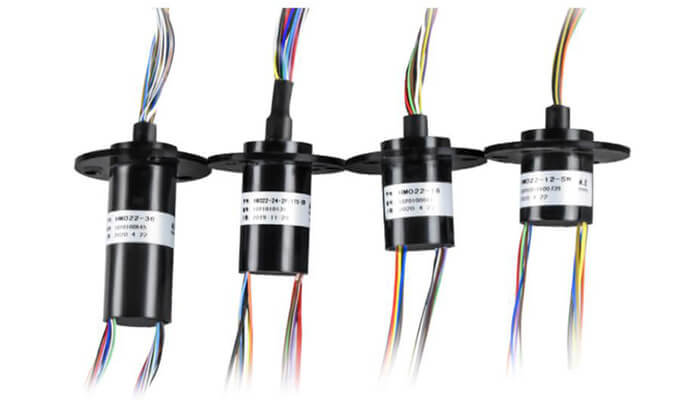
Importance of Slip Rings for Image Data Transfer
- Continuous Rotation Without Cables
Slip rings eliminate the need for external cables that could twist or tangle, ensuring uninterrupted rotation and data flow. - Handling Large Data Volumes
CT scanners, particularly multi-detector systems, generate large amounts of data. Slip rings facilitate efficient, high-speed data transfer. - Noise-Free Transmission
Fiber-optic slip rings, being immune to electromagnetic interference (EMI), ensure that the transmitted data is accurate and free of noise, which is essential for diagnostic imaging. - Synchronization with Processing Systems
Quick data transfer ensures that the processing system receives the data without delay, supporting real-time image reconstruction.
Data Transfer in Helical and Multi-Slice CT Scans
- Helical CT Scans
As the gantry rotates continuously while the patient moves through the scanner, slip rings enable uninterrupted data flow during this spiral motion, making 3D reconstruction of images possible. - Multi-Slice CT Scans
Modern CT scanners capture multiple slices simultaneously, generating vast data streams. Slip rings allow instant data transfer to the stationary computer, enabling fast and detailed imaging.
Slip rings are essential for efficient image data transfer in CT scanners. They allow high-speed, interference-free data transmission between rotating and stationary components, supporting real-time imaging and improving diagnostic accuracy. Advanced fiber-optic or hybrid slip rings ensure that modern scanners meet the increasing demands of helical and multi-slice imaging, ensuring optimal performance and enhanced patient care.
How Does Slip Ring Technology Work in CT Scanners?
In CT scanners, slip ring technology enables continuous rotation of the gantry while ensuring uninterrupted power and data transmission between the stationary and rotating components. This technology plays a critical role in allowing the scanner to operate efficiently without interruptions or mechanical wear caused by tangled cables. Here is a step-by-step explanation of how it works:
Basic Structure and Components
- Gantry: The circular rotating frame that holds the X-ray tube and detector arrays.
- Slip Ring Assembly: Located between the stationary and rotating parts of the gantry, it consists of:
- Rotating ring (Rotor): Fixed to the rotating gantry.
- Brushes or contacts: Stay in contact with the rotor to transmit signals and power.
- Stationary part (Stator): Fixed to the non-moving part of the scanner.
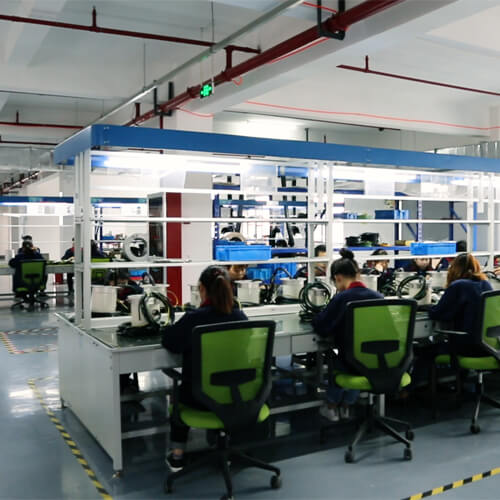
Power Transmission
- Electrical slip rings transfer power from the stationary system to rotating components, such as the X-ray tube and cooling systems.
- As the gantry rotates, the brushes maintain constant contact with the rotor, ensuring that the X-ray tube receives continuous power.
- This enables the gantry to rotate indefinitely without needing to stop and rewind, ensuring smoother and faster scanning.
Data Transmission
- Slip rings are essential for transmitting imaging data collected by the rotating detector arrays to the stationary computer system for processing.
- In advanced CT scanners, fiber-optic slip rings or hybrid designs are often used for transmitting high-bandwidth data at high speeds.
- These technologies ensure that the data is sent in real time, allowing for rapid image reconstruction without signal degradation.
High-speed and Interference-Free Transmission
- Fiber-optic channels within the slip rings allow interference-free data transfer, which is critical for accurate diagnostic imaging.
- This prevents electromagnetic interference (EMI) from affecting the quality of the signals, ensuring that the images are sharp and free from artifacts.
Role in Helical and Multi-Slice Scanning
- In helical scanning, the patient table moves slowly through the scanner while the gantry rotates continuously. Slip ring technology ensures that both power and data can be transmitted uninterrupted during the spiral motion.
- In multi-slice CT scanners, slip rings allow the system to handle large data volumes generated by multiple detector arrays, improving imaging speed and resolution.
Maintenance-Free Design
- By replacing traditional cables with slip rings, the risk of cable twisting and mechanical wear is eliminated. This minimizes downtime and reduces maintenance needs, ensuring reliable operation.
- Wireless slip rings and capacitive coupling technologies are sometimes used to further enhance reliability by eliminating physical contact between the components.
Fill out our form to get a custom CT scanner slip rings quote and learn about our offerings.
Summary of the Working Process
- The X-ray tube emits radiation as the gantry rotates around the patient.
- Detector arrays capture the X-rays passing through the patient’s body, converting them into data.
- Slip rings transfer the power required by the X-ray tube and transmit the captured data to the stationary computer system in real time.
- The computer processes the data to generate detailed cross-sectional images of the patient’s body.
Slip ring technology is integral to modern CT scanners, ensuring continuous power and data transmission while allowing unrestricted gantry rotation. It eliminates the need for mechanical cables, reduces maintenance requirements, and enables advanced imaging techniques like helical and multi-slice scanning. This technology ensures that CT scanners operate efficiently, providing fast, high-quality imaging essential for accurate diagnosis and patient care.
See What We Can Do


